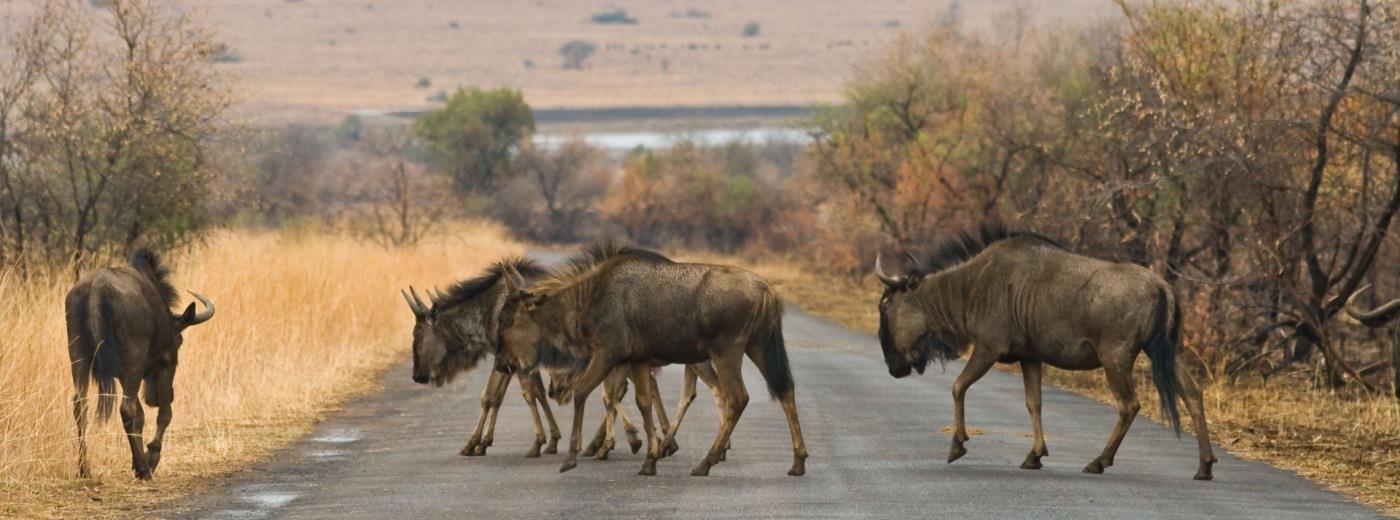Kruger, Addo, Pilanesberg and Hluhluwe-Umfolozi
A self-drive safari can be enjoyed at numerous world-class National Parks throughout South Africa, and each Park is unique, be it in terms of the wildlife experience, the flora or the scenery.
The thrill of driving down a road with the bush either side of you, and suddenly having an elephant appear and cross the road in front of you, or spotting a pride of lions lying in the shade under a tree, is wonderful.
Your personal sense of achievement, plus the fact that you may be the only car or people around at that particular time, gives an unrivalled feeling of being an 'intrepid' explorer in the wilds of the African bush.
Kruger National Park
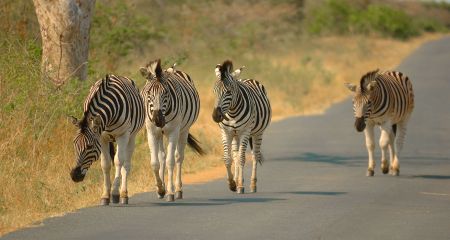
The Kruger National Park is the premier self-drive safari destination in South Africa, with an unbeatable variety of wildlife and habitats to explore, an excellent infrastructure of roads and accommodation, and a feeling of huge, wide-open spaces.
Addo
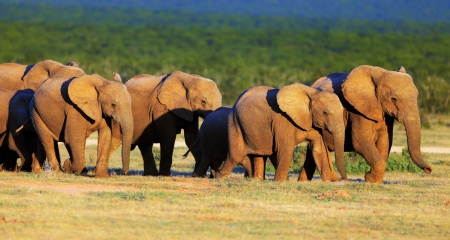 The Addo Elephant National Park, in the Eastern Cape, is home to over 450 elephants, who roam freely among the now 180,000 hectare reserve alongside the rare black rhino, lion, buffalo, kudu and red hartebeest, as well as over 400 bird species.
The Addo Elephant National Park, in the Eastern Cape, is home to over 450 elephants, who roam freely among the now 180,000 hectare reserve alongside the rare black rhino, lion, buffalo, kudu and red hartebeest, as well as over 400 bird species.
Pilanesberg
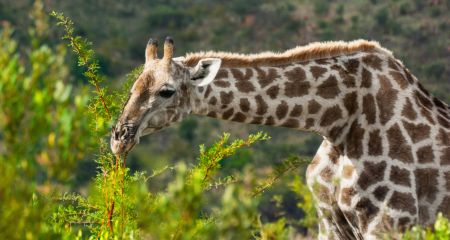
The Pilanesberg National Park, next to Sun City, has over 200 km of roads for self-drive game viewing, made up of a combination of good gravel roads and a few tarred roads.
Hluhluwe-iMfolozi
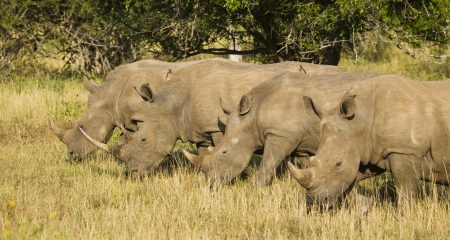 The Hluhluwe-iMfolozi Park is only 280 km from Durban, and offers wonderful opportunities to see rhino, as the Park is home to over 1,600 of this now endangered animal.
The Hluhluwe-iMfolozi Park is only 280 km from Durban, and offers wonderful opportunities to see rhino, as the Park is home to over 1,600 of this now endangered animal.
Staying on the Road and in your Car
The only downside to self-drive safaris is that you must remain on the tarred roads or gravel roads, and are NOT allowed to drive off-road in any circumstances. This can be frustrating, especially when you see a small dot in the distance which is an elephant, so a good pair of binoculars is a vital accessory.
It obviously goes without saying that you are also not allowed to get out of your vehicle at any time, except at designated viewing points, but care should still be exercised even then.
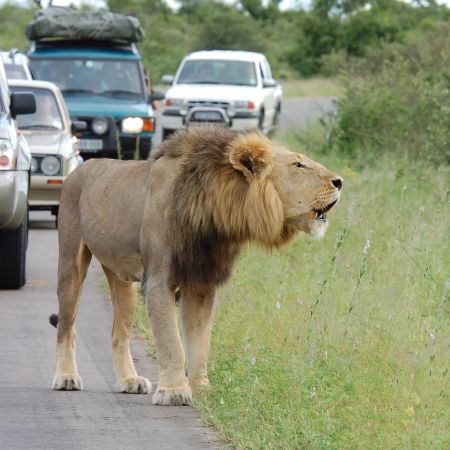 Finding The Animals
Finding The Animals
As these are wild animals, there is always no guarantee what you may see.
Waterholes are a good place to start, especially in the dry season, and it is oftern worth finding a quiet spot to park and just waiting to see what animals show up. You can also keep an eye out for vultures in the skies and in the trees as they will congregate around a kill, and this will mean there will be predators and scavengers nearby.
Watch out for other parked vehicles, as this is always a good indication that an animal has been sighted. Keeping your windows wound down and the radio off will enable you to better hear noises in the bush. Also using your sense of smell to locate fresh dung may also indicate that an animal is nearby.
When approaching game, drive very slowly and do not rev your engine, as any sudden noise may startle the animal. Take note of the animal's behaviour - if it looks agitated in any way, or makes mock runs at you, or stares and paces up and down, then drive slowly off.
You should keep your windows up if you are stationary near any of the Big 5 or monkeys/baboons.
If you are watching the animal for a long period of time, turn your engine off, but do not to angle your car on the road to avoid having to do a tricky manoeuvre should you need to drive off in a hurry.
What to do if you Break Down
If you are unfortunate to break down, the first rule is - do not panic! Stay in your car, and simply wait for a passing vehicle, and attract their attention. Ask them to drive to the nearest rest camp for help, and then sit and wait patiently for help to arrive. Under NO circumstances should you get out of your car and look under the bonnet - you never know what might be lurking in the bush just waiting for a quick and easy snack!
The Best Time to See Wildlife
The best time to see game is early morning, between 6 am and 10 am, and late afternoon from around 4 pm. During the heat of the day, many animals rest from the midday sun, and it is more difficult to spot them as they shelter under trees and bushes. All the Parks open their gates to visitors at sunrise, and close them at sunset, so you are still able to self-drive at the best times of the day.

